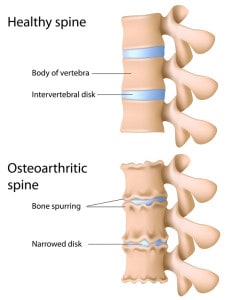I remember back when we studied workplace ergonomics in my doctoral program. The professor’s largest takeaway was that we were throwing out ideas. While some small anecdotal changes seemed to be made with some injury prevention measures, our advice was just not as effective as we wanted to see in research. Thankfully, as new research continues to emerge and affect our understanding of posture, our understanding of office injury prevention has just taken a huge step forward!
For many years, we have focused very hard on creating office spaces that fit into the ideal posture of the perfectly proportioned human being. Much like a “one size fits all tshirt”. This one size seemed to actually fit no one, and now we know why! The concept of ideal posture in pain prevention seems to have been a little bit off base!
Research
First, new research has revealed that no clinician seems to be a posture expert. No matter how hard we claim it, we are not! That goes for therapists like myself, or my colleagues across the healthcare spectrum. Because, like many things across humanity, posture exists within a spectrum that no research has been able to directly quantify. Old school plumb lines, and even newer high tech “posturography” examinations all rely on a lot of assumptions. These assumptions have now been proven at least somewhat erroneous by research as we came to a very startling discovery; any and all postures can cause pain and injury if assumed for too long. Our previous definition of “bad” posture really did not seem to increase injury risk compared to those with “good” posture.
Solutions
While the supposed ideal posture should theoretically spread force more evenly throughout the tissues of our body, after a certain amount of time even those tissues will become overstressed from the chronic workload! So what should we do about it?
The current research solutions are twofold. But both really seem to make a difference!
The first is exactly what you expect to hear from your PT: regular resistance and endurance training for our postural musculature can help improve how much strain it can take before injury! We see this with high level athletes trying to avoid hamstring strains. It is true in our postural muscles as well. Increased resilience in the muscles are trainable. We can drastically reduce injury by increasing resilience throughout the body!
But the other solution is even easier! We need to allow people to change position more often! If any one posture held for too long becomes problematic, the best way to reduce the workload on the affected tissues is to rest them while another tissue works for a bit. Items like adjustable height monitors, moveable keyboards, standing desks, and easily adjustable chairs can allow workers to diversify their positioning throughout the day. So when one position becomes uncomfortable, they can change to a new one!
This combined approach of increased mobility throughout the day and increased trained muscular resilience seems to be the way of the future in office health. So if you are finding you have hit a road block with our old methods, don’t get discouraged! There is always more coming to try and help you out when it comes to workplace ergonomics!


